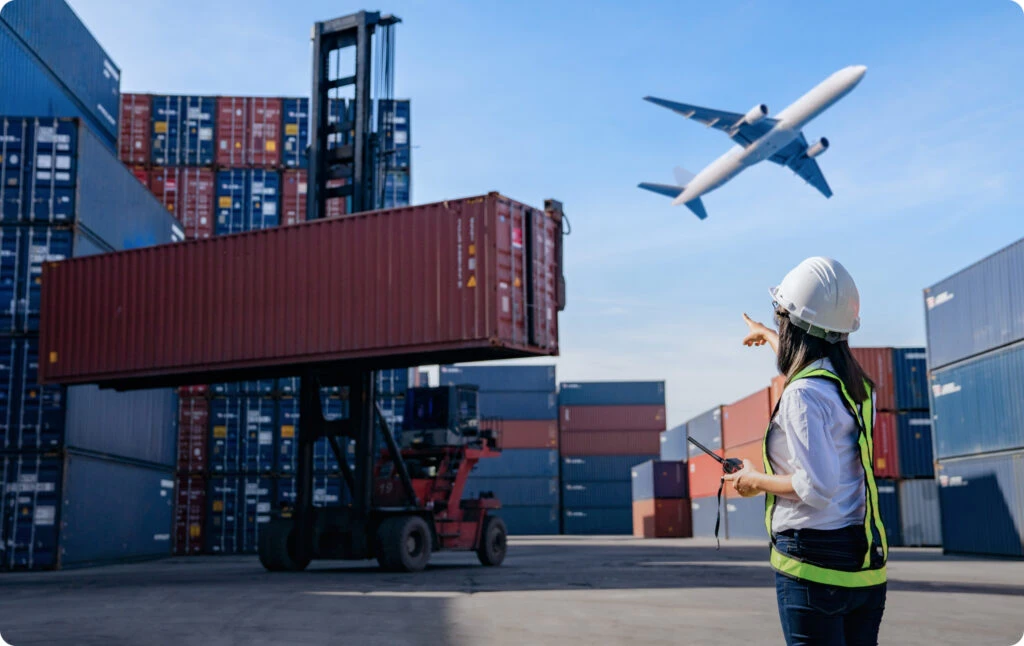How International Transport of Goods Drives Global Business

World Trade Organization data shows merchandise exports topping $19 trillion. From raw materials to finished products, international transport drives modern commerce, helping businesses reach distant clients and tap foreign resources.
A Brief History of International Transport
Commercial journeys across borders have ancient roots. Merchants once traveled on foot or by camel along the Silk Road, forging connections between Asia, the Middle East, and Europe. Seafaring empires, from the Phoenicians to the Greeks, carried spices and textiles to distant shores. These routes allowed ideas and products to migrate between civilizations.
Centuries later, steam-powered vessels and railways led to expanded markets, industrial growth, and fierce competition among shipping companies. That era laid the groundwork for more structured global networks, connecting major ports and railway hubs across continents.
The 1950s and 1960s saw containerization, which lowered costs. Standardized boxes traveled between ships and trains with no need to unload. Container ships rose in capacity, linking producers and consumers worldwide at speeds unmatched.
Modes of International Transport
Maritime shipping carries most of the planet’s traded volume with container vessels, tankers, or bulk carriers hauling quantities of goods. It remains cost-effective for large shipments, although it faces long transit times and possible port delays.
Air freight moves high-value cargo at rapid speeds. Airlines charge premium rates, so shippers often weigh urgency against cost. Machinery parts, electronics, and perishables rely on this method to meet tight deadlines.
Road and rail networks offer essential cross-border routes. Trucks bring direct delivery for shorter hauls, while trains handle heavier loads between major hubs.
Pipelines operate continuously for oil, gas, and chemicals. Once built, they keep costs manageable over long distances. However, security concerns and environmental oversight can complicate cross-border projects. Despite these hurdles, pipelines remain vital where large volumes must flow without interruption.
Economic Impact
International shipping networks help businesses reduce costs and boost efficiency. Container vessels support massive economies of scale, while just-in-time systems minimize storage expenses. Factories receive parts only when needed, freeing up capital and avoiding excessive inventory.
Importing rare materials or specialized components from overseas also broadens businesses’ capabilities. Electronics makers might procure critical microchips from Asia, and car manufacturers often source unique metals for engine designs. Exporting final goods then opens new sales opportunities. Even small or medium enterprises can tap foreign demand by leveraging e-commerce platforms. Beyond direct trade benefits, seaports and logistics hubs create jobs in loading, warehousing, and distribution. These facilities draw investor interest and promote infrastructure improvements, sparking economic vitality in the surrounding area.

Technology and Innovation
Digital breakthroughs transform today’s supply chains. Real-time tracking tools let companies pinpoint shipments at every stage, preventing costly delays. Automated documentation reduces customs hold-ups, while the Internet of Things (IoT) gathers data on temperature, location, and freight conditions. Blockchain platforms also enhance transparency and security, replacing piles of paperwork with verified digital records.
Businesses adopt greener technologies to lessen environmental harm. Ships explore cleaner fuels like liquefied natural gas and biofuels, while electric trucks gain traction for shorter routes. Meanwhile, AI-driven systems optimize delivery schedules and forecast demand shifts.
Data analytics also aids decision-making on warehouse locations, shipping lanes, and inventory levels. With precise forecasts, businesses avoid stockouts and cushion against shifts in overall consumer demand, guaranteeing smoother international transactions.
Trade Agreements and Regulatory Environment
Global markets rely on formal pacts that ease the flow of goods across borders. Organizations such as the World Trade Organization set ground rules for fair competition, aiming to remove hidden barriers and maintain balanced growth. Various blocs like the European Union, USMCA, and ASEAN promote simpler procedures and lower tariffs within their regions.
Negotiated terms can redefine entire industries. A manufacturer in Asia might quickly deliver parts to North America under a favorable agreement, lifting profits while lowering retail prices for consumers. Compliance remains critical, though. Authorities demand precise paperwork, product standards, and labor protections.
Environmental rules are growing stricter. Ships must cut sulfur emissions, and trucking fleets often meet regional targets on air quality. Safety concerns also factor in, from onboard equipment guidelines to port security checks. Government agencies watch for smuggling or other illicit activities, highlighting the complex web of regulations that keeps international shipping ethical and transparent.
Challenges and Risks in Global Transport
Political volatility can upset established routes with sudden sanctions or border disputes. Importers find themselves blocked from crucial markets, forcing quick adjustments to sourcing and distribution. Trade wars and retaliatory tariffs also strain supply chains, raising costs for key components and delaying finished products.
Infrastructure gaps create significant delays. Overcrowded ports slow the turnover of vessels, while roads or rail lines in poor condition limit capacity. Driver shortages add another layer of strain, especially during peak seasons. When holiday demand surges, even reliable freight channels can buckle under pressure.
Cargo security remains an ongoing concern. Piracy still threatens certain maritime corridors, and organized theft can target high-value loads on highways. Technological vulnerabilities have surfaced with the rise of digital tools. Hackers may disrupt scheduling systems or hold data for ransom.
Global awareness of environmental issues has sparked scrutiny of emissions from ships and trucks. Regulators push for cleaner operations, yet truly green alternatives often cost more or require new infrastructure. Despite these hurdles, the global movement of goods continues to expand, placing pressure on logistics planners to navigate evolving risks without sacrificing efficiency.
Summary:
International transport links producers and buyers worldwide, fostering efficiency, competition, and constant innovation. Cargo ships, planes, trucks, and trains each serve unique roles in creating economic opportunities across continents. Trade agreements, regulatory shifts, and technology breakthroughs influence how smoothly these flows move. Although challenges persist, steady progress in logistics and infrastructure keeps commerce robust.
